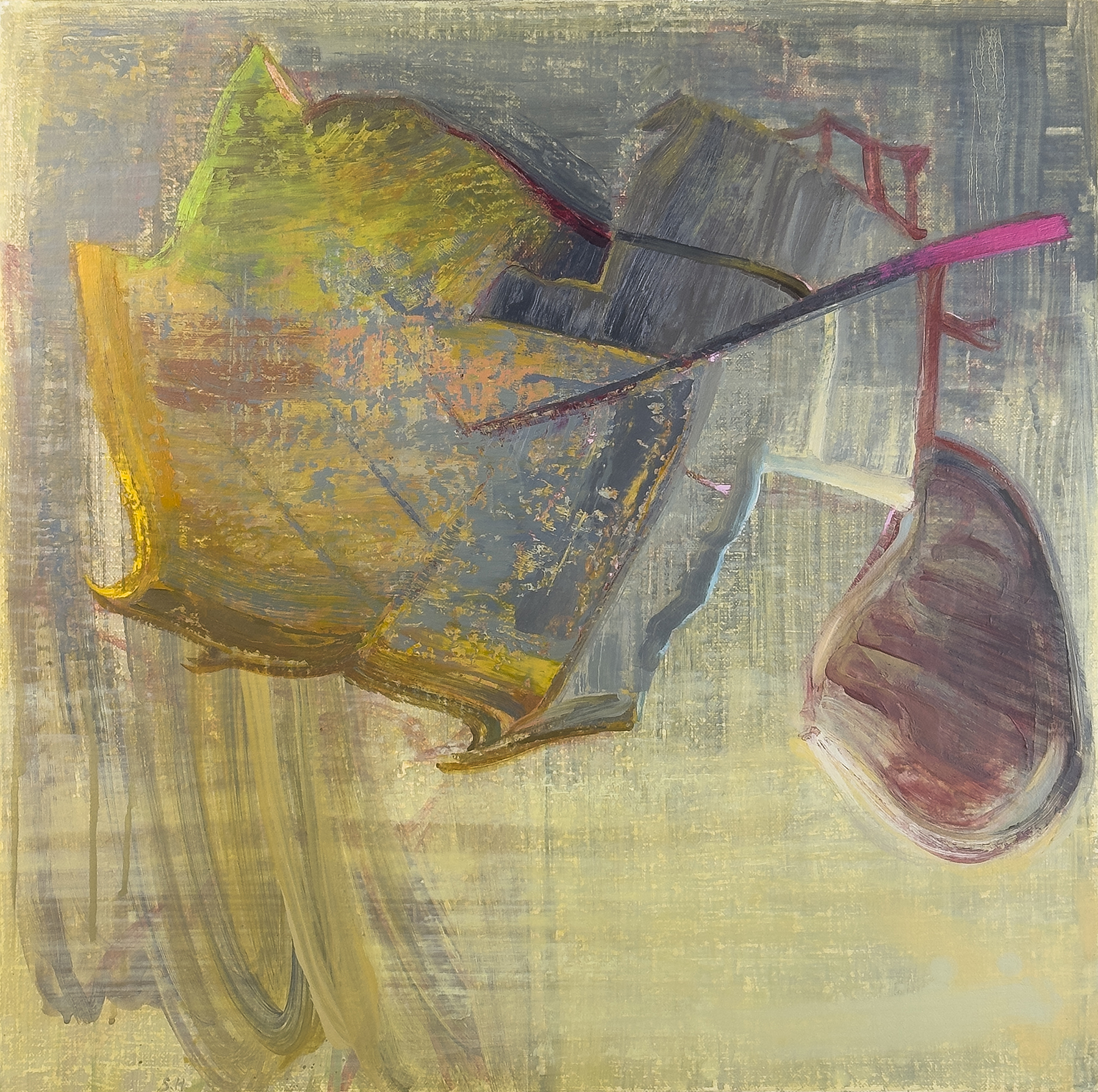by Aaron Wilder, Curator of Collections and Exhibitions at the Roswell Museum
© Roswell Daily Record
“Chimera” by Sue Hettmansperger, 2003, oil on linen. Gift of Ray Graham, Roswell Museum collection.
Last month, the Roswell Museum resumed its monthly column, which focused on the painting entitled Gunnison by Edward Chávez. The column was also renamed to “It’s Your Art” to emphasize that the Roswell Museum’s collection is your collection. Despite the museum’s closure due to the devastating October 2024 flood, staff continues to work behind the scenes on care and restoration of collection objects.
This month, I am focusing on contemporary artist Sue Hettmansperger, who was born in Akron, Ohio, in 1948. When she was nine years old, her family relocated to Albuquerque, where she grew up. For the Iowa Women Artists Oral History Project, Hettmansperger is quoted in 1998 as saying, “… when we moved to New Mexico, nature became all-consuming; it was huge. …” The environment of her adopted home would have a significant impact on her emerging artistic practice.
In the catalog for the 1999 exhibition Sue Hettmansperger: Paintings and Drawings at AIR Gallery in Brooklyn, Mario Naves wrote, “Hettmansperger credits her upbringing in New Mexico with her fascination with — and connection to — nature. This is, I think, especially evident in her sense of color. Notwithstanding the occasional vibrant hue, Hettmansperger’s chromatic range is muted and dusky; one can’t help but feel that such characteristics hearken back to the landscape she grew up in. The austerity of Hettmansperger’s color makes for subtle modulations of temperature (warm) and light (glowing).”
Beginning in the early 2000s, Hettmansperger’s paintings began to focus on solitary constructions centered and floating in ambiguous spaces. She forms these constructions through a process of aggregating disparate, only partially organic, elements. In the catalog for the 2019 exhibition Sue Hettmansperger Iteration: Painting and Collage at Swarthmore College’s List Gallery in Pennsylvania, Andrea Packard wrote, “She most often begins with small-scale experiments in collage and the resulting compositions form the basis for her oil paintings.”
Hettmansperger’s constructed, floating compositions are representative of her self- and worldview. In the 1998 Oral History Project interview, she said, “I try to interject a disjunctive element, a difficulty, which is reflective of my life experience and what I see going on in the world and in the culture at large … . I go to books a lot for ideas and sometimes for imagery, science books, and things like that.” These statements reveal that Hettmansperger is not only amalgamating psychological, interpersonal and cultural systems in her work but also scientific, even down to the cellular level, in her painted constructions. In a statement on the artist’s website, she says, “Collaged spaces in these paintings weave together elements and systems of biologic form, fragments of detritus, traces of product packaging material, and a range of digital artifacts while collapsing, dissolving and questioning their boundaries.”
Hettmansperger’s 2003 oil on linen painting in the Roswell Museum collection is entitled Chimera. Originating from Greek mythology, the chimera was a monster composed of a lion, a goat and a snake merged together. In contemporary language, this term is used to describe any imagined hybrid entity — examples include Frankenstein’s monster and the jackalope. The artist also thinks of a chimera as a dynamic shapeshifter, constantly in transition between forms. In a statement about her Chimera series for the oral history project, Hettmansperger wrote, “The language of painting embodies the morphology of form through process, materiality and its collaboration with the structure of space. Walking the line between abstraction and representation, the imagery of this series refers to the human body, botany, digital distortion, and manufactured objects … boundaries between organisms are increasingly blurred, and our awareness of digitally altered images makes us question the truthfulness of everything we see … .”
In Chimera, we see a somewhat rigid form on the left with expressive brushstrokes extending below. The form branches out to the upper right of the frame before dropping down into a bulbous shape. The ambiguity prompts us to question what we see. Packard wrote, … “each work simultaneously reads as a still life, a landscape, and ideational space … As synthetic materials pollute our food supply and rising sea levels reshape the continents, she asks us to consider what corresponding changes might take place in the terrain of imagination.” It's up to us as to what the impact of the chimera is or will be. Is it a monster hot on our heels? Is it an omen of what is to come? Is it the manifestation of our own past and present actions? Or is it, perhaps, the potential within us to merge our disparate selves into one hybrid creature to chart a new course forward together? Our actions today will ultimately make that determination.
Sue Hettmansperger received her Bachelor of Fine Art and Master of Arts from the University of New Mexico in 1972 and 1974, respectively. She participated in the Roswell Artist-in-Residence program twice, in 1975-76 and again in 1989-90. Other artist residencies include MacDowell in New Hampshire, Ucross in Wyoming and Yaddo in New York. She has been affiliated with artist collective AIR Gallery in New York since 1989 and with Bemis Center for Contemporary Arts in Nebraska since 1994. The artist has received numerous awards for her work, including a National Endowment for the Arts Fellowship in 1983, a John Simon Guggenheim Memorial Fellowship in Painting in 2008 and an Iowa Arts Council Major Grant in 2009. In addition to the Roswell Museum, her work is included in many collections, including the Albuquerque Museum, the Art Institute of Chicago, the Des Moines Art Center, the Metropolitan Museum of Art and the San Francisco Museum of Modern Art. Hettmansperger taught at the University of Iowa from 1977 to 2018.
Please stay tuned for more from the Roswell Museum. We appreciate the outpouring of support from the community during our closure. And remember, “It’s Your Art.”